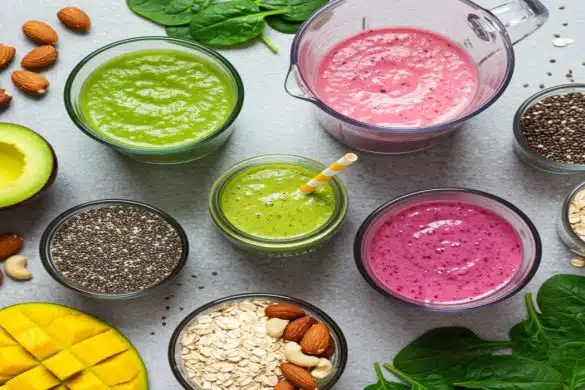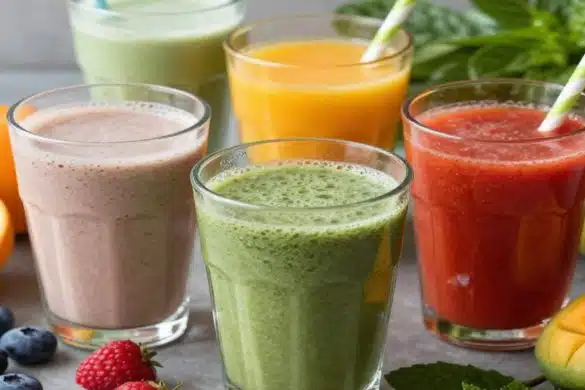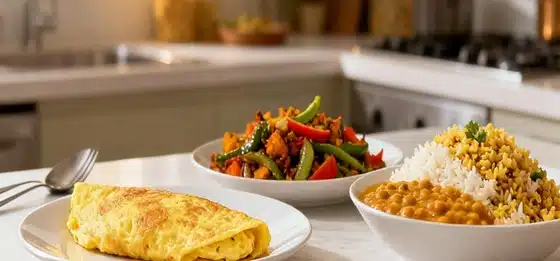Hunger pangs are intense sensations of hunger. They may be challenging for many people to experience. Hunger pangs tend to vary per person. However, most struggle with the never-ending battle to stop hunger. leading to poor food choices, overeating, and making it difficult to follow a balanced diet. The good news is there are many holistic approaches to help manage hunger pangs.
These approaches are healthy and sustainable. When you address the root causes of hunger pangs and adopt mindful eating practices to manage hunger, it becomes easier to maintain a healthy diet.
In this article, we explore various holistic approaches to control hunger pangs.
Start with a Balanced Diet
As someone with bad hunger pangs, you are likely already all too familiar with the never-ending complaints from your stomach, contracting and growling as if you’ve been starving yourself for days on end.
This is caused by your body constantly monitoring energy and nutrient consumption, sending signals based on what it needs to sustain your daily activities. This is known as interoception, where your various senses send you information about your body’s internal state. In this case, your stomach, unused to a diet, is sending you signals to fill up.
The good news is that you won’t have to sign up for some starvation routine, like the infamous HCG Diet. Rather, the idea here is to pay more attention to the type of food and nutrients in what you’re eating.
Eating a diet rich in whole foods can help reduce your hunger. You should include whole grains, vegetables, fruit, lean protein, and healthy fat. These foods provide your body with essential nutrients and fill you up.
When you include foods that are nutrient dense with every meal, it helps to regulate blood sugar and also keeps hunger pangs away. You want to avoid foods that have a high amount of sugar and are highly processed. These foods cause rapid spikes and drops in blood sugar. These rapid increases and declines can trigger hunger.
Increase the amount of fiber you eat. Foods rich in fiber have proved to help curb appetite, helping you better manage hunger pangs. You will feel fuller for longer periods of time, and your digestion process slows down. You can also include legumes and nuts to increase your fiber intake. Fiber also helps stabilize blood sugar levels, preventing rapid drops that can trigger hunger.
You want to be sure to eat enough healthy fats as part of your balanced diet. These types of foods also help you feel satisfied for longer. You can include food like avocados, nuts, seeds, olive oil, and fatty fish to increase your intake of healthy fats. It is important to eat all of these foods in moderation. This helps you truly have a blanched diet and supports satiety.
Hydration is Key

Hydration is Key
Not many realize that there’s actually a direct correlation between thirst and hunger. While food provides essential nutrients that the body converts into a natural resource, water plays a crucial role in dealing with hunger and alleviating hunger pangs
From the moment you take a mouthful of food, your body starts breaking down the food in preparation to be digested. Ever wonder why you have more saliva in your mouth while you eat? This saliva is produced as you chew through your meal to form what is known as bolus.
This bolus helps soften the food and prepare it to start the long journey down the digestive system. The more water intake you have, the softer the food is, making it easier for your body to process.
From here, water helps smooth the journey from the mouth right through to the digestive tract, forming a slippery layer that coats the lining of your stomach and intestines, minimizing friction and promoting healthy digestion.
Water also causes stomach stretch. Essentially, it has to go somewhere, right? As you drink, the water settles in your stomach, causing it to expand and stretch. At this point, the stomach will send signals to the brain that space is being used up, which creates a sense of fullness.
Drinking a glass of water before a meal or while eating can help fill up the stomach, which in turn helps you better manage your food portions. However, it’s important to remember that sometimes these signals can be confusing, and you may confuse being thirsty with being hungry.
To distinguish thirst from genuine hunger, try drinking a glass of water first when you feel hunger pangs, and monitor the gnawing feeling. If it subsides, chances are you may have just been dehydrated.
Eat Mindfully
Mindful eating is when you pay attention to the present moment and savor each bite. It also requires you to listen to the signals your body is giving you as they relate to being hungry and full.
When you practice mindful eating, it helps you better understand your body and the feeling of hunger. You can be more tuned into your hunger cues which helps to stop hunger pangs.
When you eat mindfully, you slow down, completely chew your food, and be present during each meal. This creates a better relationship and connection with your body’s hunger and satiety signals. This makes it easier to understand, manage, and respond to hunger pangs.
Get Proper Sleep
Sleep deprivation directly impacts your body’s ability to digest and maintain a healthy balance of food intake. This is due to the interruption of your body’s natural hormone balancing of Ghrelin and Leptin, which both help regulate hunger and reduce hunger pangs.
Also known as the hunger hormone, Ghrelin is essentially the hormone that tells your brain it’s time to snack up on something delicious. If you have a bad sleep schedule, the levels of this hormone tend to skyrocket, which leads to those dreaded hunger pangs we’re trying to avoid.
On the opposite end of the spectrum, we have Leptin. This hormone is responsible for communicating satiety and tells you when your stomach is full.
Both hormones are normally produced during periods of rest. If your body is sleep deprived, the levels of both Leptin and Ghrelin decrease, which may lead to you feeling hungry despite being full.
To maintain proper hormonal levels, it’s important to get enough sleep each day. Studies show that a healthy period of sleep is about 7-9 hours. This will help your body support the proper regulation of both Leptin & Ghrelin.
Control Stress

Control Stress
Stress can be a significant contributor to emotional eating. It has been known to impact your appetite drastically. When we are stressed, our bodies release cortisol, a hormone that causes an increase in hunger and encourages cravings for comfort food. Instead of giving in to hunger, you can employ stress-relieving activities to resolve the hunger pangs and alleviate the impact of stress on your appetite.
Activities such as yoga, meditation, and deep breathing exercises can help minimize stress and decrease cortisol levels. Another method is to engage in a relaxing hobby to take your mind off stress and eating.
Intermittent Fasting
Intermittent fasting is a type of eating that involves periods of fasting and eating. This dietary approach can help regulate hunger pangs by allowing the body to adjust to a specific eating schedule.
Common methods of intermittent fasting include the 16/8 method. With this method, you fast for 16 hours and then eat within an 8-hour window. You can also try alternate-day fasting. It’s important to talk to your doctor before starting any fasting regimen to ensure it is safe for your needs.
Physical Activity
Just as with sleep, when you’re crushing a workout, your body naturally alters the hormones produced to compensate for the energy used.
Ghrelin is one of the main hormones influenced by regular physical activity. Studies have shown that regular exercise can lead to decreased levels of Ghrelin, which, just as you guessed – means less time dealing with hunger pangs.
At the same time, Peptide YY (PYY), and Flucagon-like Peptide-1 (GLP-1) hormones are increased. These hormones are also known as appetite-suppressing hormones.
The biggest “change factor” here is the intensity of your workout, as well as the duration. Don’t worry; we’re not saying you must start living in the gym. However, the more intense the workout, the more intense the hormone regulation. That said, even low-to-moderate intensity exercises can contribute to your body’s appetite control.
We hope that these holistic approaches can help you manage hunger pangs. A balanced diet, proper rest and hydration, and physically rewarding and engaging activities can go a long way to quieting those stomach rumblings without having to open the fridge.
Frequently Asked Questions about Managing Hunger Pangs
Are there specific foods that can help reduce hunger pangs?
While there is no magic food that eliminates hunger pangs, certain foods can help you feel fuller for longer. Including protein-rich foods like lean meats, poultry, fish, eggs, and plant-based protein sources can help increase satiety. Additionally, foods high in healthy fats, such as avocados, nuts, seeds, and olive oil, can also promote a feeling of fullness.
Should I avoid snacking to control hunger pangs?
Snacking can be a part of a balanced diet if done mindfully. Instead of altogether avoiding snacks, focus on making healthier snack choices. Opt for nutrient-dense options like fruits, vegetables, yogurt, or a handful of nuts. These snacks can help satisfy hunger and provide essential nutrients without derailing your dietary goals.
Can drinking herbal tea help with hunger pangs?
Herbal teas, such as chamomile, peppermint, or green tea, can be a helpful tool for managing hunger pangs. These teas are often low in calories and can help hydrate your body. Additionally, the warmth and flavors of herbal teas can provide a comforting sensation and reduce the urge to snack mindlessly.
Does regular exercise affect hunger pangs?
Engaging in regular physical activity can have a positive impact on hunger pangs. Exercise can help regulate appetite by influencing hormones that control hunger, such as Ghrelin, PYY, and GLP-1. Both aerobic exercises and strength training can contribute to appetite control. Incorporating physical activity into your routine can support weight management and improve overall well-being.
How can I differentiate between actual hunger and emotional cravings?
Distinguishing between true hunger and emotional cravings can be challenging. One effective way is to practice mindful eating. Before reaching for food, ask yourself if you are physically hungry or if there are emotional triggers behind the craving. Emotional hunger tends to be sudden and specific to certain comfort foods, while true hunger builds up gradually. Take a moment to assess your emotions and physical sensations before eating.













